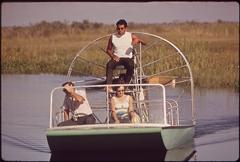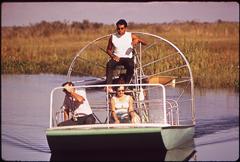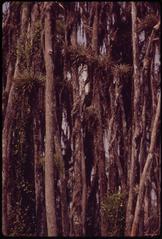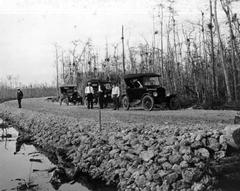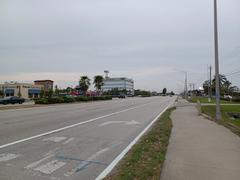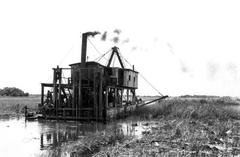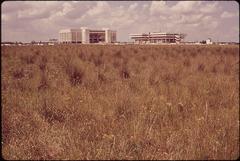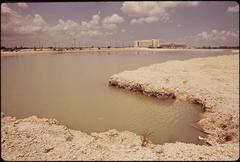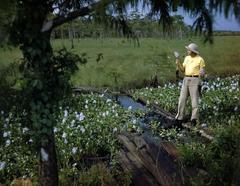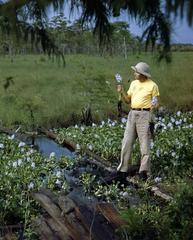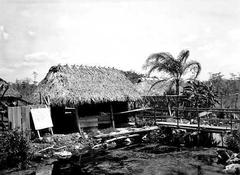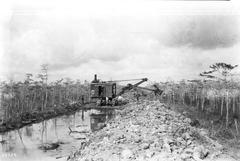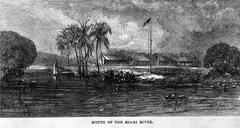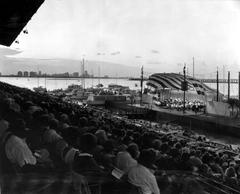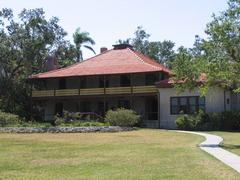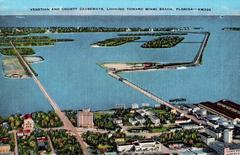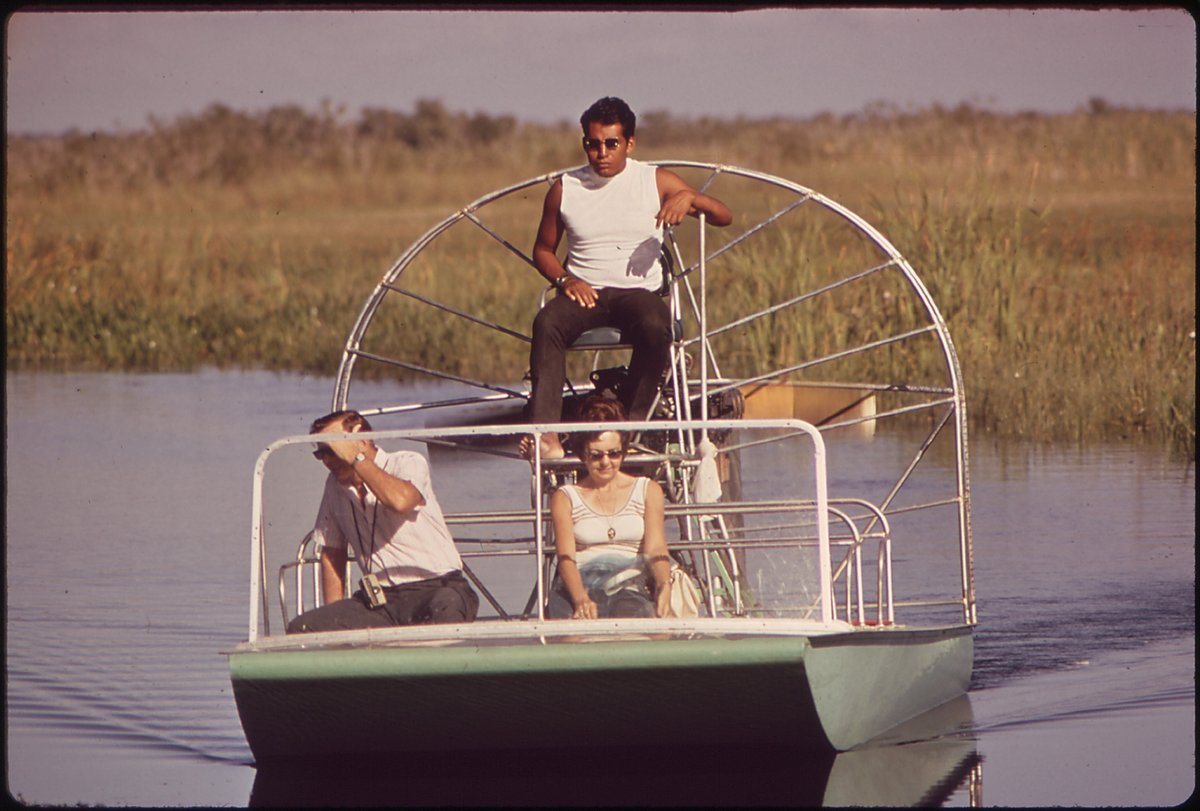
Tamiami Trail Visiting Hours, Tickets, and Miami Historical Sites Guide
Date: 14/06/2025
Introduction to Tamiami Trail and Its Historical Significance
The Tamiami Trail is far more than a roadway connecting Tampa and Miami—it is a living testament to Florida’s history, culture, and natural beauty. Stretching approximately 275 miles across the southern tip of the state, the Trail traverses diverse ecosystems, showcases Indigenous heritage, and highlights remarkable feats of engineering. Conceived in the early 20th century to link Florida’s Gulf and Atlantic coasts, the Tamiami Trail surmounts formidable natural barriers, notably the Everglades, and remains a symbol of both progress and the complex relationship between development and conservation.
Today, the Trail invites visitors to experience a tapestry of attractions: the vibrant Miccosukee Indian Village, world-renowned Everglades National Park’s Shark Valley, Big Cypress National Preserve, and a host of unique roadside stops. Ongoing environmental restoration projects underscore the Trail’s evolving legacy as Florida balances economic growth, Indigenous rights, and ecosystem preservation.
Whether you are a history aficionado, nature enthusiast, or cultural explorer, the Tamiami Trail offers an unparalleled journey through Florida’s past and present. For a deep dive into its story, see Tamiami Trail: History, Visiting Hours, Tickets, and Florida’s Iconic Historical Site, Exploring the Tamiami Trail: History, Visitor Information, and Attractions, and Tamiami Trail Attractions, Visiting Hours, Tickets, and Travel Tips for Exploring Florida’s Everglades.
Table of Contents
- Introduction
- Historical Background
- Evolution and Cultural Significance
- Visitor Information: Hours, Tickets, and Travel Tips
- Key Attractions and Unique Experiences
- Accessibility and Infrastructure
- Frequently Asked Questions (FAQ)
- Conclusion and Resources
Historical Background
Early Origins and Vision
The impetus for the Tamiami Trail emerged in the early 20th century, as Florida sought to capitalize on a booming land market and connect its growing cities. The name “Tamiami” blends “Tampa” and “Miami,” encapsulating its purpose as a direct link between these urban centers (todosobreflorida.com). The route was envisioned as a gateway to South Florida, opening vast, previously inaccessible lands and driving economic development. The project’s ambition reflected the era’s optimism and boldness, but it would soon encounter daunting engineering and environmental obstacles (stars.library.ucf.edu).
Planning and Construction
Initial Proposals and Challenges
First discussed in 1915, the Tamiami Trail project faced the logistical nightmare of crossing the watery, rugged Everglades. Early surveys underestimated the cost and complexity of building a stable roadbed on swampy ground. Despite these challenges, financial incentives and the promise of connecting Miami to the rest of Florida galvanized government and private investment.
Construction Timeline and Methods
Building the Trail began in earnest in 1915, progressing from both Tampa and Miami. The most arduous section was the stretch from Naples to Miami, completed in 1928. Workers used dredges to carve canals alongside the road, with the excavated material forming the highway’s base. Laborers endured extreme conditions, with frequent flooding, swarms of mosquitoes, and relentless heat. The Trail’s completion at a cost of $8 million (over $120 million today) was celebrated as a triumph of human ingenuity over nature (stars.library.ucf.edu), ushering in a new era of settlement and tourism.
Impact on Indigenous Communities
The Trail’s development had lasting impacts on South Florida’s Indigenous peoples, especially the Miccosukee and Seminole tribes. It bisected traditional lands, altered patterns of movement, and facilitated greater contact with non-Native settlers. Over time, the Miccosukee and Seminole adapted, establishing villages and craft shops along the Trail and becoming central figures in the region’s burgeoning tourism industry (seminoletribune.org). Today, the Miccosukee Indian Village serves as both a cultural center and a reminder of the Trail’s complex legacy.
Environmental Consequences and Restoration
Ecological Disruption
The Trail’s construction significantly altered the Everglades’ hydrology, acting as a dam that disrupted the natural sheet flow of water. This led to habitat fragmentation, changes in water quality, and declines in native wildlife populations (stars.library.ucf.edu). The ecological cost has been profound, prompting decades of scientific study and advocacy.
Modern Restoration Initiatives
Major restoration projects, such as the Tamiami Trail Modifications: Next Steps Project, have sought to mitigate damage by elevating sections of the roadway and restoring water flow. These efforts are integral to the broader Comprehensive Everglades Restoration Plan (CERP), one of the world’s largest environmental rehabilitation initiatives (nps.gov).
Evolution and Cultural Significance
Economic and Social Transformation
The opening of the Tamiami Trail transformed South Florida’s economy, enabling the growth of towns, facilitating commerce, and drawing tourists eager to explore the “River of Grass.” The Trail helped Miami emerge as a major metropolis and stimulated the development of Collier County and the Gulf Coast (seminoletribune.org).
Indigenous and Multicultural Heritage
The Trail’s history is inseparable from the story of the Miccosukee and Seminole peoples, who leveraged its presence to promote their crafts, traditions, and economic independence. Today, travelers can experience these cultures firsthand at attractions like the Miccosukee Indian Village, which features museum exhibits, live performances, and airboat tours.
Paradox of Progress
While the Trail is celebrated as an engineering marvel, its legacy is complex. Modern perspectives emphasize the importance of balancing development with conservation and honoring the rights and histories of Indigenous peoples (stars.library.ucf.edu). Restoration, education, and sustainable tourism now define the Trail’s evolving identity.
Visitor Information: Tamiami Trail Visiting Hours, Tickets, and Travel Tips
Visiting Hours
- Tamiami Trail (U.S. 41): Open 24/7 as a public highway.
- Visitor Centers and Attractions: Most operate from 8:00 or 8:30 AM to 5:00 or 6:00 PM. Check individual websites for current hours (NPS.gov), (miamiandbeaches.com).
Tickets and Entrance Fees
- Driving the Trail: Free and open to the public.
- Everglades National Park: $30 per vehicle for a 7-day pass; annual and interagency passes accepted (myscenicdrives.com).
- Miccosukee Indian Village: Free admission; fees apply for select activities (Miccosukee Indian Village).
- Airboat & Tram Tours: $25–$60 per person. Purchase tickets online or at visitor centers; advance booking is recommended during peak season (Shark Valley Tram Tours).
Best Time to Visit
- Dry Season (November–April): Most pleasant temperatures, fewer mosquitoes, and optimal wildlife viewing.
- Wet Season (May–October): Lush landscapes, fewer crowds, but higher temperatures, humidity, and insects.
Accessibility
- Most visitor centers and boardwalks (e.g., Shark Valley Tram Road, Bobcat Boardwalk) are wheelchair accessible (miamiandbeaches.com).
- Some natural trails and swamp walks may be less accessible; check with sites in advance.
Travel Tips
- Preparation: Fill up on fuel before entering remote stretches; gas stations are sparse.
- Navigation: Download offline maps—cell service is unreliable in the central Everglades.
- Safety: Bring insect repellent, sunscreen, water, and rain gear.
- Wildlife: Observe alligators and other wildlife from a safe distance. Do not feed or disturb animals.
Key Attractions and Unique Experiences
Everglades National Park: Shark Valley
- Highlights: 15-mile paved loop for tram, bike, or foot; panoramic observation tower; abundant alligators and wading birds (NPS.gov).
- Hours: 8:30 AM–6:00 PM.
- Tram Tours: Two-hour naturalist-guided tours available throughout the day (Shark Valley Tram Tours).
Big Cypress National Preserve
- Oasis Visitor Center: Exhibits, boardwalk for wildlife viewing, open 8:00 AM–4:30 PM (NPS.gov).
- Loop Road Scenic Drive: 24-mile gravel detour through cypress forest; best explored in dry conditions (Florida Rambler).
Miccosukee Indian Village
- Cultural Exhibits: Museum, alligator demonstrations, airboat tours.
- Hours: 9:00 AM–5:00 PM daily (Miccosukee Indian Village).
Other Notable Stops
- Ochopee Post Office: The smallest in the U.S.—a quirky photo opportunity (The Travel).
- Everglades City: Gateway to Ten Thousand Islands, offering boat tours and seafood dining.
- Clyde Butcher’s Big Cypress Gallery: Iconic Everglades photography and swamp walks (Florida Rambler).
- ValuJet Flight 592 Memorial: A site for reflection and remembrance (With Norwegian Eyes).
Accessibility and Infrastructure
- Highway Designation: U.S. Highway 41/State Road 90; becomes Southwest Eighth Street (“Calle Ocho”) in Miami (Gate to Adventures).
- Parking: Available at most visitor centers and attractions.
- Facilities: Restrooms, water, and picnic areas at key stops.
Frequently Asked Questions (FAQ)
Q: What are the Tamiami Trail’s visiting hours?
A: The Trail is open 24/7. Visitor centers and attractions are generally open from 8:00 or 8:30 AM to 5:00 or 6:00 PM. Always check the specific site before your visit.
Q: Are tickets required?
A: Driving the Trail is free. Tickets or entrance fees apply to attractions, tours, and some parks.
Q: Is the Tamiami Trail wheelchair accessible?
A: Many visitor centers, boardwalks, and paved trails are accessible. Some natural trails may not be.
Q: When is the best time to visit?
A: November to April (dry season) offers the best weather and wildlife viewing.
Q: Are guided tours available?
A: Yes, multiple operators offer airboat rides, tram tours, and eco-experiences. Advance booking is recommended in peak season.
Q: Where can I find more information or book tours?
A: Visit the National Park Service, Miccosukee Indian Village, and Shark Valley Tram Tours.
Conclusion
The Tamiami Trail is a remarkable corridor where Florida’s history, nature, and culture converge. From its bold beginnings as an engineering dream, through decades of economic growth and environmental reckoning, the Trail today stands as a path of discovery and reflection. Whether you are seeking wildlife encounters, Indigenous heritage, or stunning landscapes, careful planning—including awareness of visiting hours, ticketing, and accessibility—ensures a rewarding experience.
For real-time updates, maps, and guided tours, download the Audiala app. Explore additional articles on Florida’s parks and historical sites to enrich your adventure. Embark on your journey along the Tamiami Trail and experience the enduring legacy of Florida’s Everglades.
References and Further Reading
- Tamiami Trail: History, Visiting Hours, Tickets, and Florida’s Iconic Historical Site
- Exploring the Tamiami Trail: History, Visitor Information, and Attractions
- Tamiami Trail Attractions, Visiting Hours, Tickets, and Travel Tips for Exploring Florida’s Everglades
- Tamiami Trail Visitor Guide: Hours, Tickets, and Top Attractions in Florida’s Everglades
- Shark Valley Tram Tours: The Story of the Tamiami Trail
- Miccosukee Indian Village Official Site
